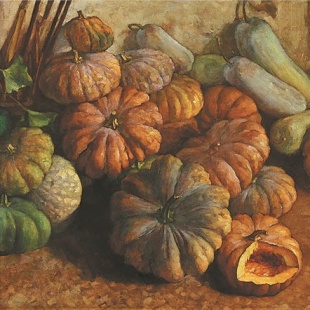A place of sanctuary and creativity


He once recalled that, when he painted, he had to move the table closer to the door and open it to let in more light to be able to work. That table was where his family ate and upon which he painted several great works; when he painted on the table, he had in his sight, through the open door, an expansive view of bamboo forests, streams and hills. He interpreted, under layers of colors, the scenes before his eyes and embedded in the mountains and trees an unyielding spirit.
Fu once said, "Jingangpo and its neighboring areas, which I visited quite often, produced scenery of unspeakable brilliance. The trees, woods, hills and valleys are all perfect models for sketching. The extraordinary scenery, often half disappearing in the mist, shows a realm of nature that is beyond the knowledge of a person, like me, who lives in southeastern part of the country and is accustomed to the landscape there."
Despite the difficulties caused by war, more than 500 exhibitions were staged in the city. There was a national art exhibition in 1943 showing modern works and antiquities, including bronzes, jade objects and lacquerware, and another show of paintings in 1945 focused on modernism, making it a landmark event at the time.
Chongqing was also instrumental in the rediscovery of Dunhuang: From 1940 to 1945, a survey team, consisting of historians, artists and archaeologists, set out from the city for the hinterland of the northwest, and investigated the Dunhuang grottoes, in what is now Gansu province, and other historical sites along the way. They held an exhibition in Chongqing in 1943 to show the public the glories of Dunhuang and the country's ancient artistic and cultural heritage.
He Guiyan, a professor at the Sichuan Fine Arts Institute, says that the exhibition reveals a panoramic picture of Chongqing and its cultural landscape in the 1930s and '40s, adding that it introduces to people the cultural accumulations of this southwestern city, and how it kept fanning the flame of Chinese art and culture.





































